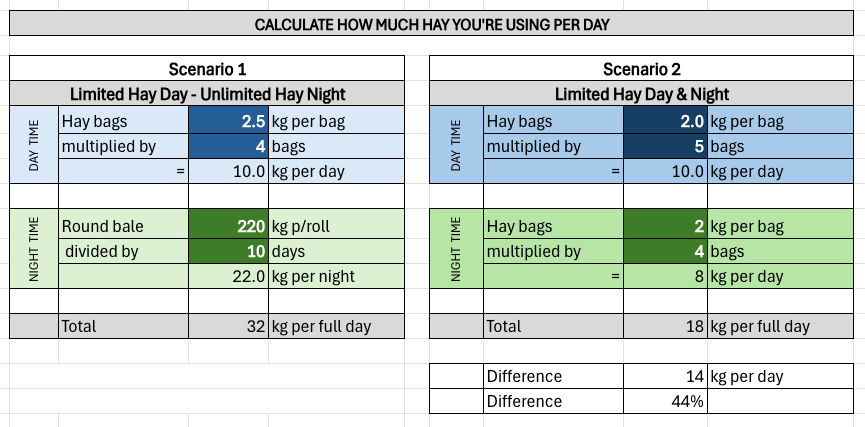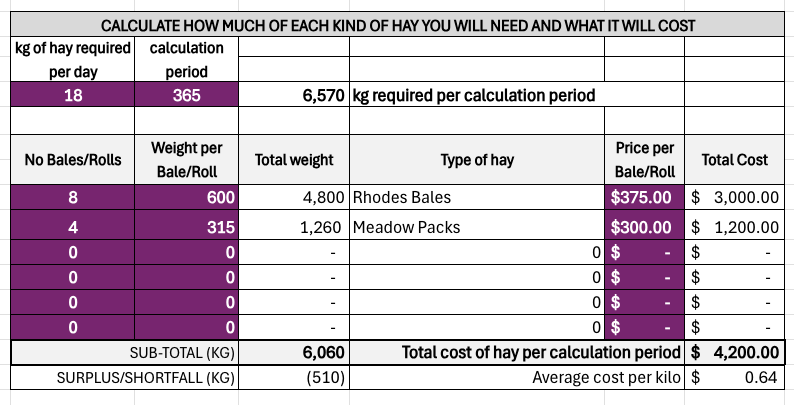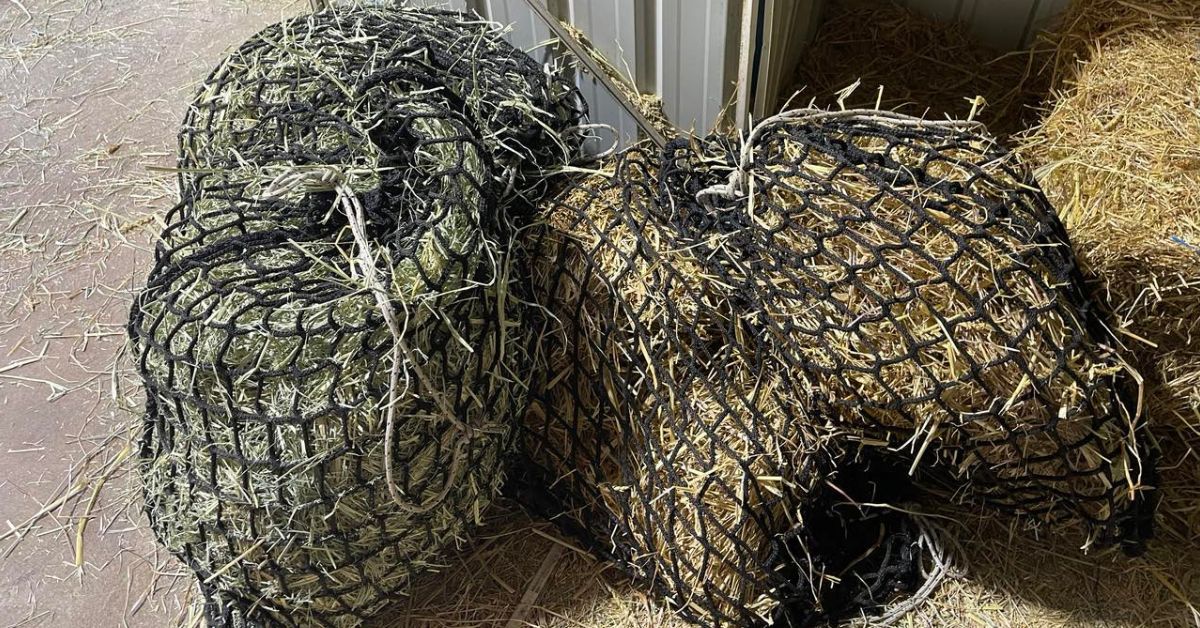DISCLAIMER: This article is written from my perspective as the owner of two horses used for pleasure riding. It’s not intended to be taken as a recommendation for every horse, combination of horses or owner’s situation, rather, a different perspective on a subject that most owners have to think about to a greater or lesser degree.
Over the years, I’ve had horses that seemed to eat as much as they needed and horses that seemed to eat as much as they could.
Recently, while describing to a friend with an overweight horse, why and how I’ve been weighing and soaking hay bags for the last 7 months on the orders of my vet, and how much of a difference this had made to Melody’s weight, a thought occurred to me. I wondered why I hadn’t been doing this all along (the weighing, not the soaking) and whether there were compelling enough reasons for other people with overweight horses to consider doing it too.
Melody was born and bred in South Australia on Clayton Station, to thrive on almost nothing. So when I offered her more hay than she needed for good health, she wasn’t using that extra hay to be twice as healthy, her body was using it to make her unhealthy enough to threaten her life.
I’d never really looked at the maths of unlimited hay to see just how much more my horses would eat, than the 2% of body weight that’s recommended by science, when they have a choice in the matter. These numbers are harder to work out when horses have access to grass, but because mine don’t, it’s a bit easier to have certainty on the numbers. At our place Melody is the eater and the pony isn’t, he’ll just eat as much as he needs, regardless of what’s available, whereas she will power on, until she sees the bottom of the bucket or net.
The information in these calculations shows the hay I’ve offered in the past, to the two horses on my property who now live day and night on a grass-free track system, based on what I can get in my area, and how much it costs me. This information is likely to vary greatly from owner to owner, so I’ve included the excel spreadsheet that these screenclips are based on, as a download at the bottom of this article. The horses that these calculations are based on, are:
- a 9 year old 15.2 Waler mare, now diagnised with EMS and recovering from laminitis; and
- a 23 year old 13.2 Quarter Horse X pony in good health.
Their combined weight is about 900kg, so according to the recommended rate of feeding, together they should be getting a combined total of 18kg of feed each day.

I’ve not kept this combination of horses on a hayroll 24/7, but for the first three or four months that they were at our property together, they were kept on a track during the day with hay from hay bags spread around the track, and in a relatively bare paddock with a low sugar hay roll at night, inside a net and a hay hut. I’d always made sure that they were getting the lowest sugar hay I could source, but hadn’t thought too much about how much of it they were eating. I just assumed they were eating as much as they needed.
When Melody was unexpectedly diagnosed with laminitis, both horses came into the stable yards and stayed there for some time. The first thing the vet recommended was that I restrict her feed intake to get her weight down, which I did.
In the beginning, she seemed to fly through the hay bags, in hindsight, because she had nothing else to do but stand around and eat. Once she could move around comfortably, and went onto the track, she had other things to occupy her mind and body with, so the hay bags lasted longer. As time went on, they started leaving a bit of hay on the ground below each hay bag, not eating every last scrap. They’re now used to their routine, and do about 7km a day of slow walking on the track each day and I’ve had to reduce the hay in their late night hay bags again this week, because they were leaving a fair bit on the ground.
Their current feeding routine is as follows:
- 6am – Small feed in the stables
- 7am – 5 bags of hay (2kg per bag) spread around the big track
- 5pm – Small feed in the stables
- 6pm – 2 bags of hay (2kg per bag) put out on the small track
- 9pm – 2 bags of hay (2kg per bag) put out on the small track

By now, I was on a roll, wondering what else I could work out, that I previously hadn’t bothered trying to. I started thinking about which format of hay, was the most economical, if I was able to manage the quantities. It turns out that the hay rolls were actually the most economical option, provided I could control the portions.

I finished up this exercise thinking that if I could calculate with relative certainty, how much hay I’d actually need for a year, I could do away with some of the worrying that I’d done over the past few years, as we’ve had hay shortages in our area for various reasons.

Observations
I had never really questioned the prevailing wisdom that horses should have access to an unlimited supply of low-sugar roughage at all times.
It’s true that horses should have a trickle of food going through their digestive system but that’s not the same as eating 24/7. They wouldn’t do that in nature, so when they do it in our care, it’s likely to have some side effects. In nature they will eat a lot, then walk a lot, then snack a bit, then walk some more, then maybe, if they’re lucky enough to come across more food later that day, they will eat again. Much like the animals of the African savannah, rather than like cows or sheep.
The key to this whole question, is what other things they have to do with their day, other than eat. This is where horse track systems really come into their own, because they give horses plenty to do all day and all night, without us having to get involved. I think about how much more I eat, when I’m home alone, bored, with nothing better to do than sit on the couch and watch TV, within easy range of the pantry. Compared with how much I think about food when I’m out in the garden all day, or on holiday, walking around sight seeing.
The maths of my unlimited hay may not be the maths of yours, but considering that it’s the single biggest expense for a lot of horse owners, I thought it was worth talking about. Not everyone loves Excel as much as I do (#entreprenerd), so if you’d like to do your own hay maths but aren’t sure where to start, I’ve included a link to download my spreadsheet, so that you can replace my numbers with yours.
Thank you to Corinna Myles from Stockfeed West, and Glenn Petersen of WA Stockfeed Supply for their assistance with bale weights for my calculations.

